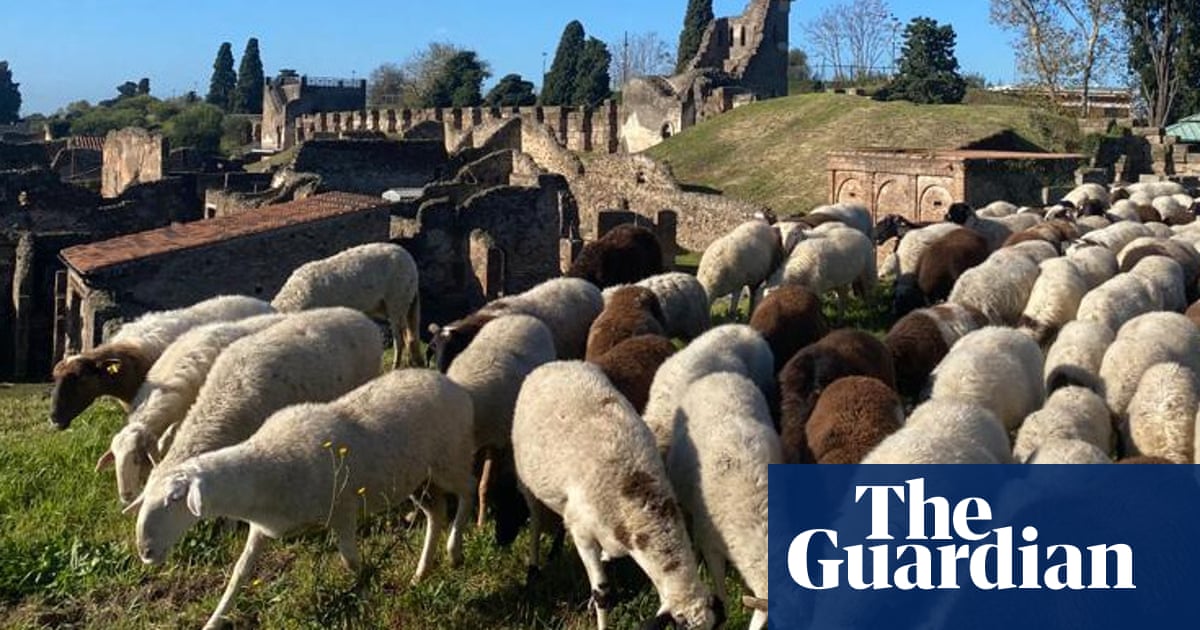The Wool Wire | February 8, 2023
Shearing truths, socking it to Putin, restoring ancient peatland, celebrating a 50-year-old Minnesota lamb and wool program, grazing the ruins of Pompeii, and the potential for yarn to bring about change.

News snippets from the wool world
After that Arctic blast last week, my respect for sheep and their coats has only deepened. Fortified with multiple layers of pure wool, I was able to make several forays outside in subzero temps, with a windchill of -40F, without any real discomfort. Not that I'd recommend having a picnic or going camping in those conditions, but still. How reassuring to know that you don't need high-tech fossil fuel-engineered "performance" gear to stay warm. Just wrap yourself wisely in a sheep.
But that cold snap also drove home the danger of listening to well-intending people who suggest we replace wool with hemp or linen. In warm climates, possibly. But had I donned a linen sweater last week before heading outside, I would've been in immediate danger of hypothermia. There's more to it than a simple swap.
Why, then, do some people continue to yell that wool is a bad idea, shearing is cruel, and we'd be better off wrapping ourselves in recycled soda bottles?
Alas, I don't have a quick answer for that one—although it's always wise to follow the money if you want to find the real forces driving anything.
But I can continue to keep you well-stocked with talking points for your next conversation about wool.
Let's dig in.
Shearing sees a shift
In Australia, years of declining shearer numbers were compounded by COVID, travel bans, and weather delays that prevented international shearing crews from entering the country. However, interest in shearing and wool handling is now on the rise.
Driven by a mix of school leavers and older workers looking to swap professions, some training schools are seeing their strongest demand in years.
Wage competition is also playing a role, as well as the changing reputational image of shearers.
But that same wage competition, combined with declining revenue for coarser wool, is posing financial challenges for large sheep operations in places like New Zealand—as the below video explores.
That was a large sheep operation. The Livestock Conservancy has just released a short film featuring Dr. Temple Grandin that slows the pace and shows how two women shearers practice the craft—and why it is such a vital part of animal welfare.
Sheep bring Pompeii back to life
Guess who's been hired to revitalize the unexcavated meadows covering a third of the archaeological park of Pompeii? Not a flock of oil barrels, that's for sure. No, it's a flock of 150 sheep—and with any luck, this is just the beginning.
“They entered the site with great enthusiasm and got to work straight away,” said Gabriel Zuchtriegel, the director of the Pompeii archaeological park. “Maintenance is a huge cost, so instead of paying someone to cut the grass we have sheep eating it, fertilising it and creating a pastoral landscape that is much more resistant to dry seasons and heavy rainfall.”

One man’s quest to get 10,000 pairs of NZ-made wool socks to Ukraine
Like many of us, New Zealand freelance creative director Chris Childerhouse has been reading news from Ukraine and feeling a deep sense of despair.
Then he had an idea.
“I just couldn’t quite believe that there was a war happening in Europe in the year 2022,” he recalls. To try and combat feelings of helplessness, the self-described “problem solver” got to work. “I just started to think about if New Zealand had anything that we could offer,” he explains. “Everyone’s sending tanks and guns and missiles and stuff like that, but we’re not really set up to do that.”
You know what New Zealand is set up to do? Make things out of the wool grown by the country's 26 million sheep. So last fall, Childerhouse launched SOS: Send Our Socks, a crowdfunded campaign to send 10,000 pairs of New Zealand-made wool socks to people in Ukraine.

Lamb and Wool Program Celebrates Half a Century
Here's a fun one: Did you know about Minnesota West Community and Technical College’s Lamb and Wool Program? And that it's been operating for half a century now? I did not.
The program started in 1972 with the purpose of boosting the level of sheep management and production in the Pipestone, MN, area. The program grew and changed over the years and has included short courses, bus tours, a home study course, a sheep shearing school, a sheep management course, the development of a lamb marketing contract, a sheep for profit school, online sheep management courses, a Sheep Central Consulting Option, sheep facility tours, farm focus meetings and more.
For more information, visit the school's Lamb and Wool Program description.
Using modern 'logs' to save ancient peatland
Starting in the 19th century, North Yorkshire farmers drained upland peat bogs so that their livestock had more land for grazing. But that has led to increased erosion and downstream flooding, as well as a dramatically reduced biodiversity. Now that we know more about the incredible role peat bogs play in sequestering carbon, there's been a renewed effort to save and restore what's left of the peatland.
And here's where the wool comes in.

It's hoped that the wool will prove to be an effective alternative to imported coir and reduce the carbon footprint of the raw materials used in maintaining these ancient ecosystems as well as increasing the demand for wool for local farmers.
The trial is being run as a result of a grant awarded by the Yorkshire Dales National Park Authority, which administers Defra’s three-year Farming in Protected Landscapes program in the Yorkshire Dales National Park.
Yarn in the News
And finally, did you see Peggy Orenstein's Guest Opinion piece in The New York Times? It's called The Revolutionary Power of a Skein of Yarn. She nods to the healing and restorative powers of knitting for a second before lauding its true potential as a powerful tool for social and political change.
Orenstein is also the author of Unraveling, the new pandemic memoir about skipping the sourdough and leaping into learning how to shear, dye, spin, and knit a sweater she calls "the world's ugliest" but that is actually quite lovely.
On that note, I'll send you back out into your day. Thanks, as always, for your readership and your support.
Take care and stay warm,
Clara






